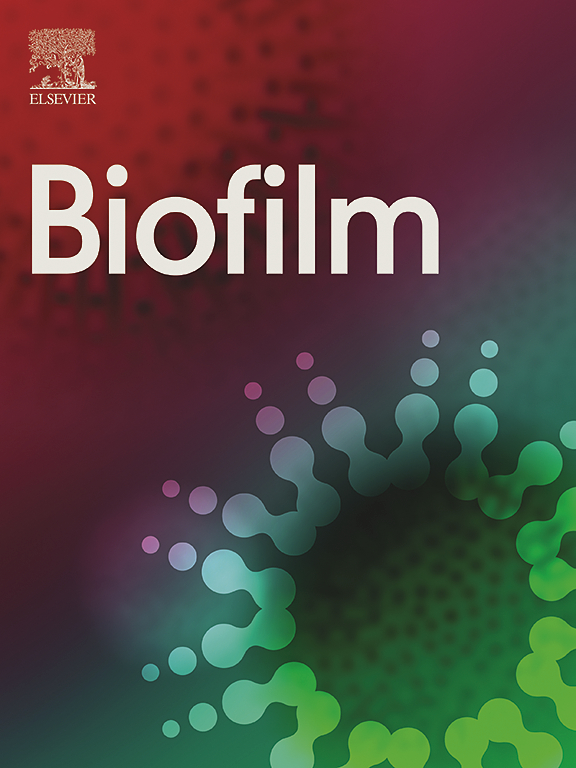Bacterial cellulose: Enhancing productivity and material properties through repeated harvest
IF 5.9
Q1 MICROBIOLOGY
引用次数: 0
Abstract
Bacterial cellulose (BC), a promising versatile biopolymer produced by bacteria, has an immense potential in various industries. However, large-scale application is hindered by high production costs and low yields. This study introduces an innovative approach combining a prolonged static culturing with intermittent harvesting. This novel strategy resulted in a significant increase in BC productivity, achieving up to a threefold rise in biomass within the first 35 days. Prolonged growth and continuous harvesting not only enhanced productivity but also led to a mutant strain M2 with higher yields and distinct BC architecture. Mechanical and structural analyses revealed that sequential harvest correlated with increasing crystallinity, altered crystallite sizes, and improved stiffness of the dry material during initial cycles, potentially reflecting bacteria adaptation to resources limitations. Genomic analysis identified key mutations in the M2 strain, including one in the RelA/SpoT enzyme, suggesting a reduced stringent response that promotes growth under nutrient-limiting conditions. Untargeted metabolomic profiling revealed deregulation of several metabolites, including a significant difference in fatty acid metabolites that could potentially influence membrane fluidity and BC secretion. Such metabolic and structural adaptations enhance BC production efficiency and material properties. These findings highlight the potential of intermittent harvesting for sustainable BC production and the role of bacterial adaptation in tuning BC properties. Further research will optimize this strategy and expand its applications in developing tailored biomaterials for diverse industries.
细菌纤维素:通过反复收获提高生产率和材料性能
细菌纤维素(BC)是一种很有前途的由细菌产生的多用途生物聚合物,在各个工业领域具有巨大的潜力。然而,高生产成本和低产量阻碍了大规模应用。本研究介绍了一种将长时间静态培养与间歇收获相结合的创新方法。这种新颖的策略导致了BC生产力的显著增加,在前35天内实现了生物量的三倍增长。长时间生长和连续收获不仅提高了产量,而且产生了产量更高、BC结构独特的突变株M2。机械和结构分析显示,在初始循环中,连续收获与结晶度增加、晶体大小改变和干燥材料刚度提高相关,这可能反映了细菌对资源限制的适应。基因组分析确定了M2菌株的关键突变,包括RelA/SpoT酶的一个突变,表明在营养限制条件下促进生长的严格反应降低。非靶向代谢组学分析揭示了几种代谢物的失调,包括脂肪酸代谢物的显著差异,这可能会影响膜流动性和BC分泌。这种代谢和结构适应提高了BC的生产效率和材料性能。这些发现强调了间歇采收对可持续BC生产的潜力以及细菌适应在调整BC特性中的作用。进一步的研究将优化这一策略,并扩大其在开发不同行业定制生物材料方面的应用。
本文章由计算机程序翻译,如有差异,请以英文原文为准。
求助全文
约1分钟内获得全文
求助全文

 求助内容:
求助内容: 应助结果提醒方式:
应助结果提醒方式:


